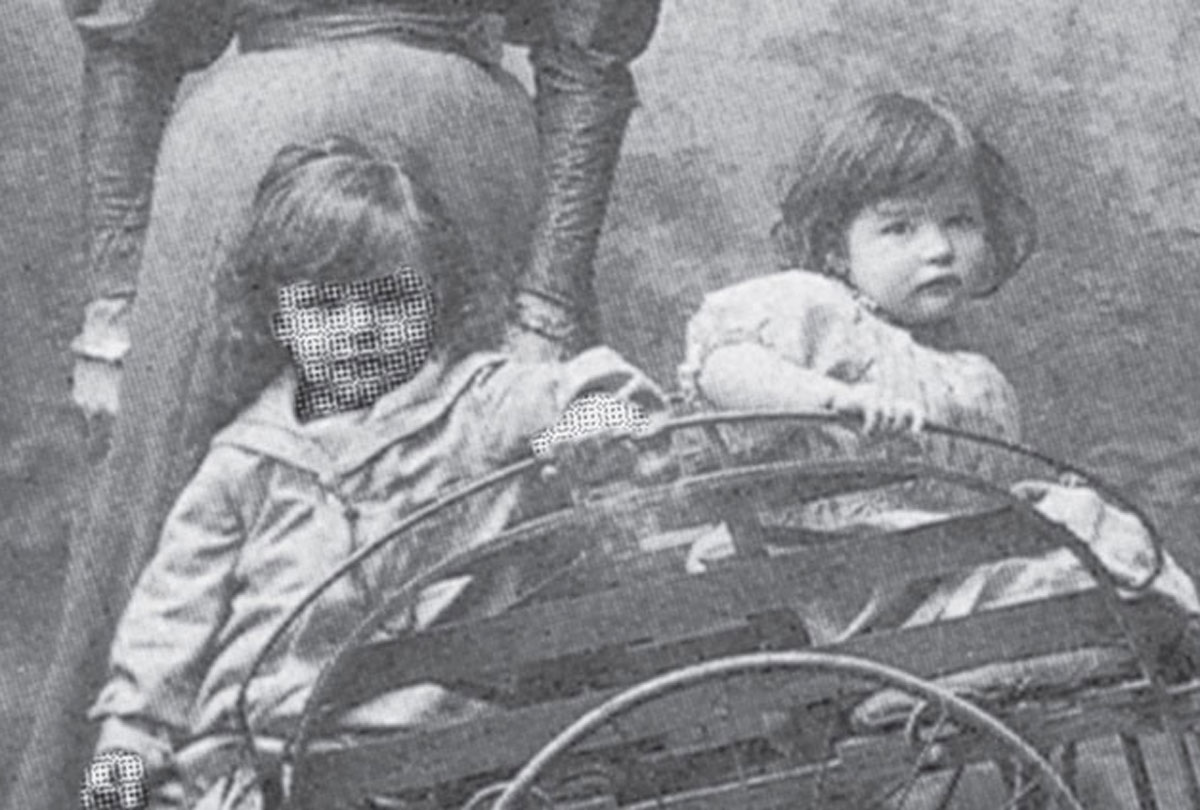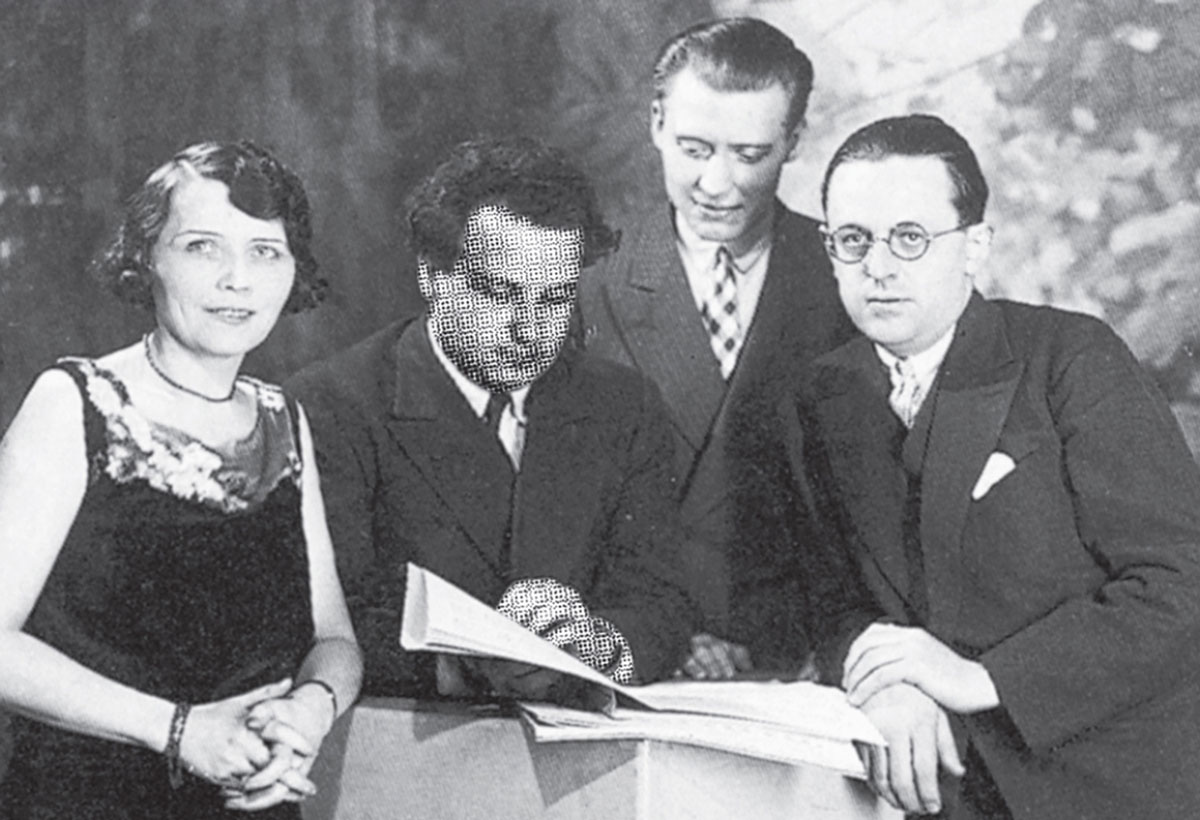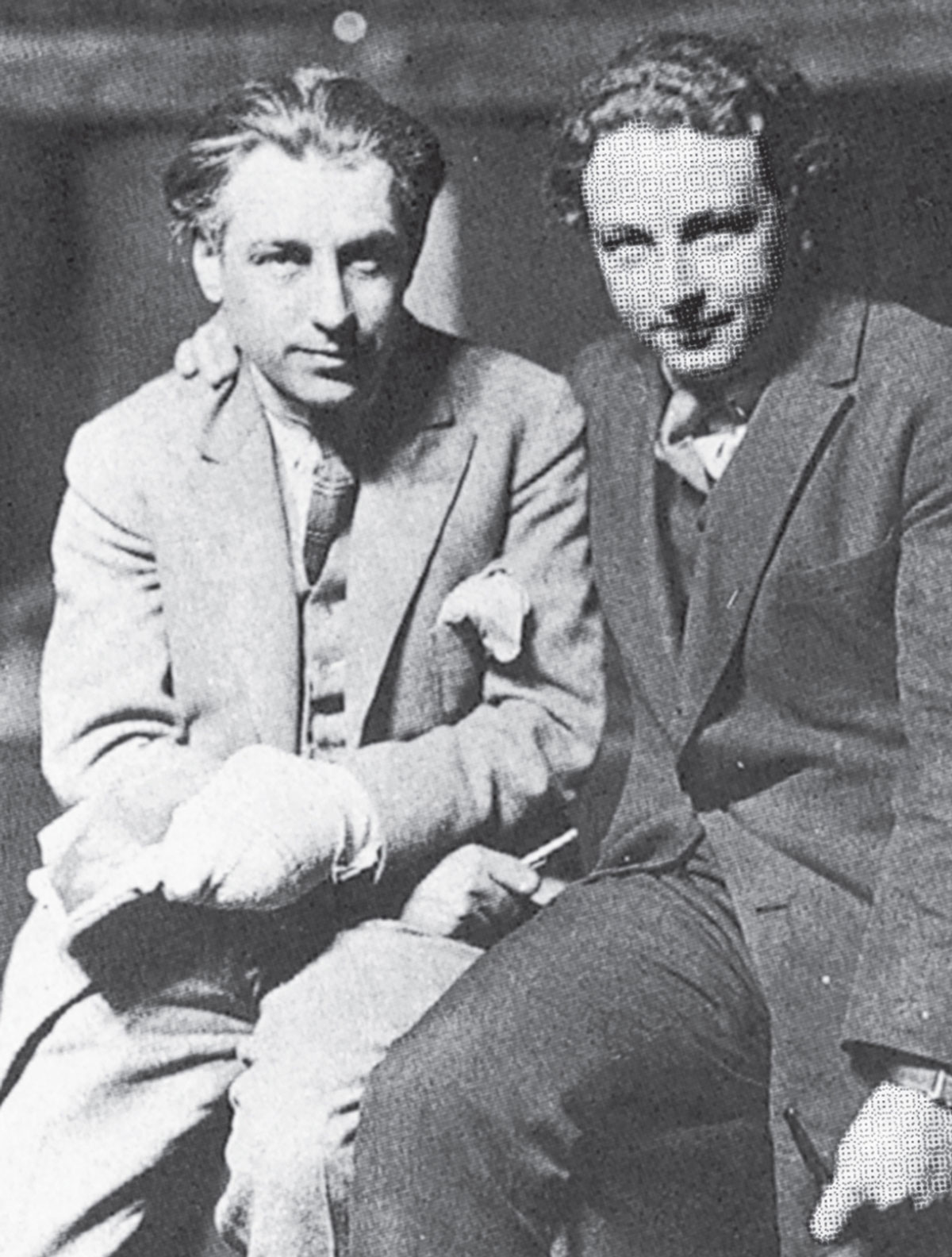The Life of Ernst Moiré
Bringing the illegible into focus
Lytle Shaw

Mystery has always surrounded the life of the Swiss photographer Ernst Moiré (1857–1929). Not least because, though frequently photographed throughout his life, it is almost impossible to see him. Indeed, the blurry photographs of Moiré possibly point to the origin of (and certainly exemplify) the technical problem of two dot matrices misaligning during printing and resulting in a flawed reproduction, now commonly know as “the moiré effect.” Or, perhaps, these photographs do not index the first human to produce the moiré effect at all, since we cannot be sure who they depict. What we do know, first, is the Swiss government’s account: that a photographer named Moiré was regarded, in the Switzerland of the 1920s, as impervious to photography; second, that this bizarre disappearance became a source of nationalist pride (Moiré was applauded for his technological Ludditism by anti-modernist elements within Swiss folk culture, just as his supposed visual “neutrality” was seen, more generally, as socially exemplary); and third, that a collection of photographs—ostensibly of Moiré, and always with one illegible figure—is housed in Zurich’s municipal archives. Opposing this position stands a counter-testimony from Moiré’s relatives (embarrassed, perhaps, to have their name still associated with this famous photographic failure), which may implicate the Swiss government itself in Moiré’s photographic illegibility. It was to investigate this case of meta-failure that the editors at Cabinet sent me to Zurich. There I would document a documentary abyss.
Living inside the Zurich archive for two months, I gradually pieced together the following biographical outline. An Ernst Moiré was indeed born, in 1857, in the capital of the Swiss Confederation’s smallest Canton of Zug, within view of the Bernese Oberland. Moiré’s primarily French ancestors made their way from Geneva to Lucerne, where we find his father, Pierre Wolfli Moiré (a postal clerk and scientific tinkerer) playing a small role in the attacks on Jesuit Priests that precipitated Switzerland’s democratic revolutions of 1847-1848. The subsequent inquiry into these attacks, however, was hampered by the lack of postmarks on the conspirator’s letters, for which Pierre was held accountable. Exiled to Zug, Pierre seemed to drop from sight: records of his later activities are scanty, possibly because he instructed Ernst to vaporize his correspondence.

Aside from carefully recorded chemical experiments in his father’s improvised lab, the main records of Moiré’s early education are decayed prints from his early Alpine photographic expeditions to the Jungfrau with his Uncle Rudolf, in which the two would document both geological and architectural curiosities, accompanied (we learn from verses inscribed onto the prints themselves) by readings of Albrecht Von Haller’s classic of Swiss proto-nationalism, Die Alpen. Moiré seems to have excelled at Zurich’s Technical Institute, winning both the Uli Fleiss Laboratory Award, and the Gottfried Taur Field Photographic Award—while, however, being chastised for his habitual bureaucratic errors, especially his failure to sign test and registration forms, a problem that would plague Moiré throughout his career. Strangely, nothing in Moiré’s childhood or college records suggests his imperviousness to photography. But Moiré’s complex relation to authorship and representation does begin to emerge at this time, especially in his copy of the influential color theories of the poet Charles Cros, each of whose 272 pages bears no less than seven of Moiré’s own signatures, in widely varying styles. This pattern would continue in his highly secretive post-university experiments in Zug.
Considered in the history of photography, Moiré’s string of near patent misses is stunning: in March of 1879 he invented a photogravure process parallel in all essentials to Klíc’s (published that year), but failed to address his patent form. More tragically, Moiré’s pioneering use, in outdoor photography, of gelatin-silver bromide instead of wet collodion (a process he had discovered as a fourteen-year-old, on a trip with Uncle Rudolf) did not become known until after Charles Bennett had popularized the process in 1879. The most crushing patent failure, however, was autochrome, whose development Moiré had followed closely since his reading of Cros. From the beginning, the three color filters used in the process had relied on fine grains of potato starch, dyed orange, green and mauve. The dying process, especially the use of zinc phosphate to produce the yellows, was both toxic and slow. Moiré’s introduction of mature sweet potatoes was as elegant as it was simple. Though Moiré was in fact able to patent the sweet potato process, the untreated status of the potato itself rendered the process, under Zug Canton law, a craft and not a science, thereby allowing the Frenchman Louis Ducos du Hauron, and after him the Lumière Brothers, to popularize their own three-color systems in photographic technical journals.
Moiré was crushed. Worse, after this protracted string of failures, he found himself in desperate financial straits, which accounts for his new partnership with his college friend, Willi Ostler, in a more conventional photographic studio. Because Ostler’s uncle, Jürg, was the Canton Commissioner of Architecture, they landed a long-term, lucrative project documenting Alpine architecture. Still, Moiré seems not to have been able to give up his hopes of discovering a new photographic process. As early as 1882, Moiré had experimented with high-amperage flash bulbs in night photography. By 1896, the craze for portraiture had reached such a peak that Moiré believed, were he able to invent an outside flash mechanism that could merge figures with those romantic nighttime mountainscapes most admired in portrait painting, that he could make a definitive entrance into the technological history of photography, and a mountain of Swiss francs.

But on 3 August 1896, tragedy struck. Moiré wrote to his father: “Lili [Moiré’s bride] and I had left Zurich for a weekend in Zermatt, where the Matterhorn backdrop would insure the dramatic night portraits I wished to produce. After two unsuccessful low-level flashes I increased the amperage. Lacking my spectacles, I misread 100 for 10. The effect was instantaneous and devastating. Lili grasped for her eyes and spun arcs on her back on the chalet’s terrace while I, after smashing the offending bulbs into innumerable shards, helplessly pawed the tiles around her blind twirls.” After two months in Zermatt monitoring Lili’s condition, Moiré was infinitely relieved to see signs of progress (though Lili would always wear thick bifocals after the event, and could never drive a car).
Meanwhile, in Zurich, Willi was forced to move forward with the definitive prints of the government architecture project, without Moiré’s invaluable technical assistance. A novice at printing, Willi misaligned the plates and produced a sequence of blurry images, which were immediately rejected by the government agent. In a moment of panic, Willi suggested to the stern client who had descended on his shop that the business was dually owned (a “fact” he was successful in proving by Ernst’s faulty records), and that the responsibility for the quality of the prints was “in Moiré’s hands.” By the time Ernst returned to Zurich two months later, “the moiré effect” was all over the papers.
After 1896, Moiré rarely appeared in public. In fact, it was not until 1927 (two years before his death) that Moiré became known as a recalcitrant photographic object. This because a handful of prints (ostensibly) of the photographer had been included in an exhibition at the Alpine Museum in Bern called “Mind over Matterhorn,” which documented para-scientific phenomena among the Mountaineering Swiss. Here, Moiré’s whole biography gets told through a consistent photographic absence. We see Pierre, Uncle Rudolf, Willi, Jürg, Lili and many other of Moiré’s friends and family, flanked by an eerie near absence—a figure almost legible, but subject to a kind of technical poltergeist. Interpreting this absence as deliberate, the exhibition likened Moiré to Emma Kunz and (later in his life) Rudolf Steiner who embodied strains of holistic and anti-scientific feeling within Swiss popular medicine.
Because he refused to write (and even sign his name) after 1896, Moiré’s own response to the exhibition is not known. Nor did Lili comment on her husband’s infamy until 1941, two years before her own death, when she wrote an open letter to the new Swiss Canton Commissioner of Architecture. Inexplicably unpublished, this letter emerged only in 1998, accompanied by documents that justified the suppression as a measure to insure faith in the Swiss central government during the war that surrounded them, during which both French and German elements of the population suspected the government of aiding the opposing side.
Lili describes an afternoon in November of 1896, three months after the explosion of “the moiré effect,” in the Zurich newspapers: “Ernst had taken the train to Zug to gain distance from the maelstrom that had hold of his name. I remained in Zurich to oversee our household. Returning from the Limmat vegetable quay, I noticed two men emerging from our attic dormers with stacks of framed photographs. Till then, rude government officials had visited only our studio, not our flat on Münstergasse. I cursed the intruders from two blocks away. Whether my suddenly frigid neighbors—eyeing the spectacle from their windows—were in support of the theft, or had merely chosen to ignore me, I do not know. Their daily glares told me only that they, too, felt cheated, as Swiss, by the failure of Herr’s Ostler’ government subsidized project, now attributed to my dear Ernst, of whom every photograph was gone when I arrived. Now the scoundrels have shown why.” How Lili, with her weakened eyesight, was able to notice two small figures 60 yards away adds one final mystery.
Lytle Shaw most recent poetry book is The Lobe (Roof, 2002). He co-edits Shark magazine and curates the Line Reading Series at The Drawing Center.
Spotted an error? Email us at corrections at cabinetmagazine dot org.
If you’ve enjoyed the free articles that we offer on our site, please consider subscribing to our nonprofit magazine. You get twelve online issues and unlimited access to all our archives.